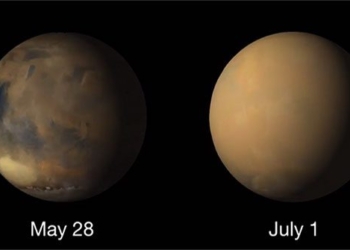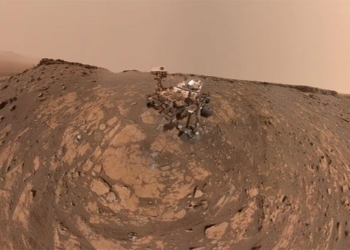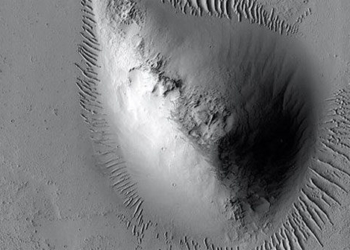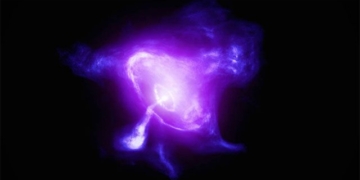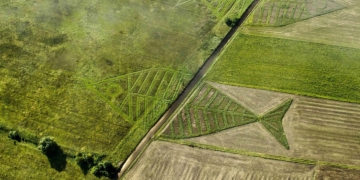The Jet Propulsion Laboratory (JPL) of NASA has released a panoramic image of a Martian sunset captured by the Curiosity rover, composed of 28 smaller images.
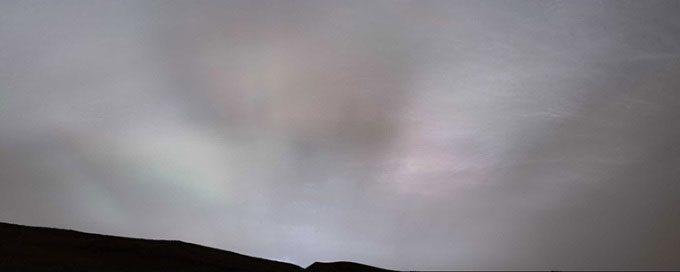
The NASA Curiosity rover captured images of sunlight rays shining through clouds at sunset on February 2. (Photo: NASA/JPL-Caltech/MSSS)
The image shows rays of sunlight illuminating a band of clouds as the sun set below the horizon on February 2. These rays of sunlight are known as crepuscular rays, derived from the Latin word “crepusculum”, meaning twilight. This marks the first clear observation of sunlight rays on Mars.
Curiosity captured this scene during its latest twilight cloud survey, which was conducted based on observations made in 2021 regarding noctilucent clouds. While most Martian clouds hover no more than 60 km above the surface and are composed of water ice, the clouds in this recent image appear to be at greater altitudes, where it is particularly cold. This suggests that these clouds are composed of CO2 ice, commonly referred to as dry ice.
Similar to Earth, clouds provide complex and vital information that helps scientists better understand the weather. By studying the times and locations where clouds form, researchers can gain insights into the composition, temperature of the atmosphere, as well as the winds on Mars.
In the 2021 cloud survey, many images came from Curiosity’s black-and-white navigation cameras, providing detailed views of the cloud structures as they moved. However, the new survey, conducted from January to mid-March 2023, utilized more of the color Mastcam, enabling scientists to study how cloud particles develop over time.
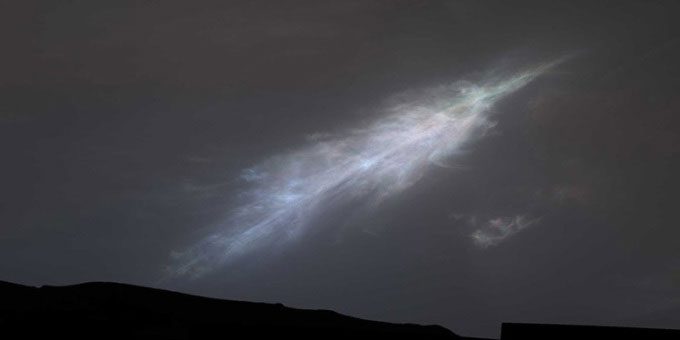
The Curiosity rover captured a feather-like multicolored cloud right after sunset on January 27. (Photo: NASA/JPL-Caltech/MSSS)
In addition to the images of sunlight rays, Curiosity also photographed a colorful, feather-like cloud on January 27. When illuminated by sunlight, some types of clouds can become iridescent, displaying vibrant colors like a rainbow.
“By examining the color transitions, we can see changes in particle size within the clouds. This tells us about how the cloud develops and how the particles change size over time,” said Mark Lemmon, an atmospheric scientist at the Space Science Institute in Boulder, Colorado, discussing the iridescent clouds.
Curiosity captured the rays of sunlight and the iridescent clouds in panoramic images, each composed of 28 individual images sent back to Earth. Before being published on the Jet Propulsion Laboratory (JPL) website on March 6, the images were processed to highlight key features.








































